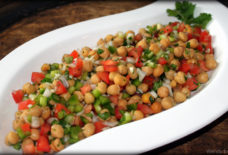People-to-People Project builds ties between Cambridge, Bethlehem
By James Sanna
Wicked Local Cambridge
For 10 years, a group of Cambridge residents has been building bridges between two cities on opposite sides of the world.
Starting in 2007, the Cambridge-Bethlehem People-to-People Project has brought Cantabrigians to the West Bank city of Bethlehem and has brought stories of Bethlehem’s residents and Palestinian residents of Cambridge to light.
The group’s original founders were moved by a 2006 visit from Palestinian officials who described the city’s “social and economic isolation” due to the construction of the Israeli security barrier and ongoing security operations in the West Bank, said Catherine Hoffman, one of the project’s leaders. That visit lead to numerous community meetings, Hoffman said, from which a delegation of 13 Cambridge residents was organized to visit Bethlehem in 2007.
“In Bethlehem, we visited city councilors, schools and universities, cultural and peace centers, a cancer center and health facilities. We talked with legal and human rights groups about the conditions facing Bethlehem with the construction of the wall dividing them from next door Jerusalem and even from one another. We met the mayor whose child had been killed by Israeli soldiers who formed a bereavement group with Israeli parents as well as many who had been the targets of soldier raids,” Hoffman said. “Out of that trip several special bonds were formed – with the Al-Rowwad Cultural Center [in Bethlehem], a youth cancer center and a friendship which would lead to creating a kindergarten.”
The group organized more cultural exchange programs in 2008 and again in 2011, when the People-to-People project hosted a youth theater troupe from the Al-Rowwad Cultural Center who performed across Cambridge.
Hoffman said the group tries to build Cambridge residents’ understanding of life in Bethlehem. In 2009, she said, the group sponsored an exhibition of historic images of Bethlehem paired with contemporary photographs by kids from the Al-Rowwad youth center shot in approximately the same locations that Hoffman said reflected the children’s “current realities.” The exhibition, titled “Views of Bethlehem, Then and Now,” was on view at the Stebbins Gallery of First Parish in Cambridge.
The group’s most recent project is an attempt to reveal the complexities of being a Palestinian in Cambridge today.
“In 2012 and 2013, we reached out to local Palestinian and Palestinian-American friends and acquaintances in Cambridge to create an exhibit. Our goal was to bring forward some of the voices and faces of the Cambridge-connected Palestinian community,” Hoffman said.
Ultimately, they chose 21 people of different religions, social classes, ages, genders and sexual orientations, including several families. Portraits of these people are paired with interviews about their experiences as immigrants or as the children of immigrants, about their families and traditions, and what it means to be a Palestinian in America. The exhibit toured local galleries and mosques in 2013, and is being resurrected for a new showing at Harvard’s Gutman Library. This time, the exhibit will be paired with two events: on March 9 from 7 to 9:30 p.m., a screening of short films about life in a Palestinian refugee camp near Bethlehem and a lecture by a Palestinian filmmaker Amahl Bishara, and on March 22 from 6:30 to 8:30 p.m., an intergenerational panel discussion about life as a Palestinian in Cambridge featuring two local mothers and their daughters.
Many of the exhibition’s subjects said they enjoy Cambridge’s diversity and welcoming residents.
“I would like to raise my kid to be citizens of the world because in a way, I became a citizen of the world, and Cambridge allows you to be a citizen of the world. As a diaspora Palestinian I realize how important it is to have roots, and I need to give my kids roots, stability. So the way I’m raising them, they are American kids. But they are world citizens so far as they have German blood and Palestinian blood, and a little bit of Italian blood. Cambridge allows for diversity, very welcoming and doesn’t shun somebody,” said Cambridge resident Leila Farsakh.
“There is so much beauty in Cambridge and I don’t think I would have learned that open-mindedness anywhere else. Different from Boston. In Cambridge, after the bombings, you saw a strong movement of people with their love for one another. You think they would attack the mosque. Here, they sent a police officer to the Mosque after the bombing to protect it. How many cities would do something like that? It’s beautiful to live here,” said Cambridge Rindge and Latin graduate Mushoor Au-Rubeih, who is featured in the exhibit along with his parents.
Hoffman and others who work on the People-to-people project see their work as challenging Cambridge residents, making them more aware of a part of the world that sometimes doesn’t get much attention.
“We will certainly continue to be a human link between Bethlehem and Cambridge and a voice for the human stories of life under siege from occupation which are not readily available in Cambridge,” she said.
“Palestinians have received few opportunities to represent themselves in their diversity to contemporary Americans,” said Jeff Spurr, Hoffman’s fellow People-to-People Project member. Often ignored or misrepresented, Palestinians have faced suspicion and discrimination and given little political or cultural space for directly engaging broader audiences.”








